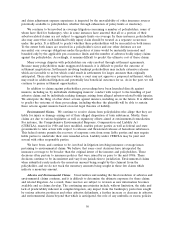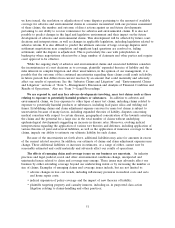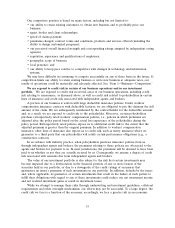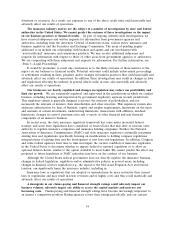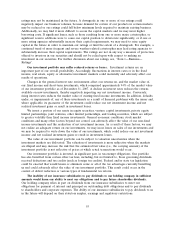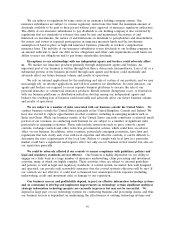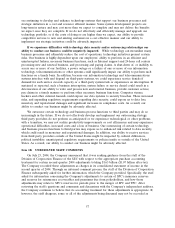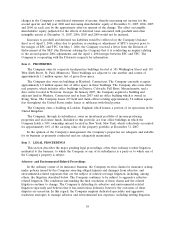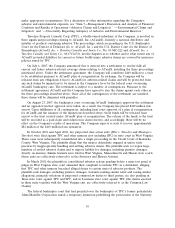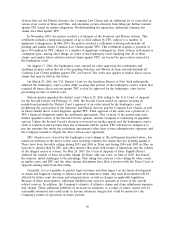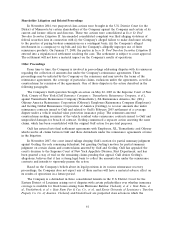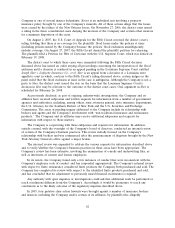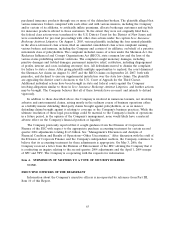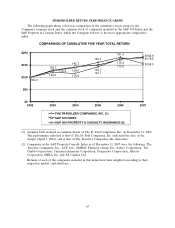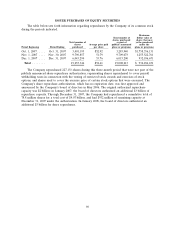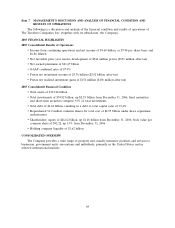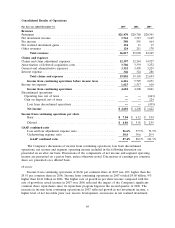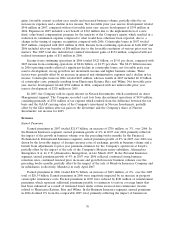Travelers 2007 Annual Report Download - page 72
Download and view the complete annual report
Please find page 72 of the 2007 Travelers annual report below. You can navigate through the pages in the report by either clicking on the pages listed below, or by using the keyword search tool below to find specific information within the annual report.Actions (but not the Hawaii Actions), the Common Law Claims and an additional set of cases filed in
various state courts in Texas and Ohio, and enjoining certain attorneys from filing any further lawsuits
against TPC based on similar allegations. Notwithstanding the injunction, additional common law
claims were filed against TPC.
In November 2003, the parties reached a settlement of the Statutory and Hawaii Actions. This
settlement includes a lump-sum payment of up to $412 million by TPC, subject to a number of
significant contingencies. In May 2004, the parties reached a settlement resolving substantially all
pending and similar future Common Law Claims against TPC. This settlement requires a payment of
up to $90 million by TPC, subject to a number of significant contingencies. Each of these settlements is
contingent upon, among other things, an order of the bankruptcy court clarifying that all of these
claims, and similar future asbestos-related claims against TPC, are barred by prior orders entered by
the bankruptcy court.
On August 17, 2004, the bankruptcy court entered an order approving the settlements and
clarifying its prior orders that all of the pending Statutory and Hawaii Actions and substantially all
Common Law Claims pending against TPC are barred. The order also applies to similar direct action
claims that may be filed in the future.
On March 29, 2006, the U.S. District Court for the Southern District of New York substantially
affirmed the bankruptcy court’s orders while vacating that portion of the bankruptcy court’s orders that
required all future direct actions against TPC to first be approved by the bankruptcy court before
proceeding in state or federal court.
Various parties appealed the district court’s March 29, 2006 ruling to the U.S. Court of Appeals
for the Second Circuit. On February 15, 2008, the Second Circuit issued an opinion vacating on
jurisdictional grounds the District Court’s approval of an order issued by the bankruptcy court
prohibiting the prosecution of the Statutory and Hawaii Actions and the Common Law Claims, as well
as future similar direct action litigation, against TPC. Final approval of the order was a predicate to
TPC’s financial obligations under the settlement agreements. One or more of the parties may seek
further appellate review of the Second Circuit’s opinion, and the Company is evaluating its appellate
options. Unless the Second Circuit’s decision is reversed on further appeal and the bankruptcy court’s
order is reinstated and becomes final, the settlements will be voided, TPC will have no obligation to
pay the amounts due under the settlement agreements (other than certain administrative expenses) and
the Company intends to litigate the direct action cases vigorously.
SPC, which is not covered by the bankruptcy court rulings or the settlements described above, has
numerous defenses in the direct action cases asserting common law claims that are pending against it.
There have been favorable rulings during 2003 and 2004 in Texas and during 2004 and 2005 in Ohio on
motions to dismiss filed by SPC and other insurers that dealt with statute of limitations and the validity
of the alleged causes of actions. On May 26, 2005, the Court of Appeals of Ohio, Eighth District,
affirmed the earliest of these favorable rulings. In Texas, only one court, in June of 2005, has denied
the insurers’ initial challenges to the pleadings. That ruling was contrary to the rulings by other courts
in similar cases, and SPC and the other insurer defendants have filed a petition with the Texas Court of
Appeals seeking relief from that ruling.
Currently, it is not possible to predict legal outcomes and their impact on the future development
of claims and litigation relating to asbestos and environmental claims. Any such development will be
affected by future court decisions and interpretations, as well as changes in applicable legislation.
Because of these uncertainties, additional liabilities may arise for amounts in excess of the current
related reserves. In addition, the Company’s estimate of ultimate claims and claim adjustment expenses
may change. These additional liabilities or increases in estimates, or a range of either, cannot now be
reasonably estimated and could result in income statement charges that could be material to the
Company’s results of operations in future periods.
60


